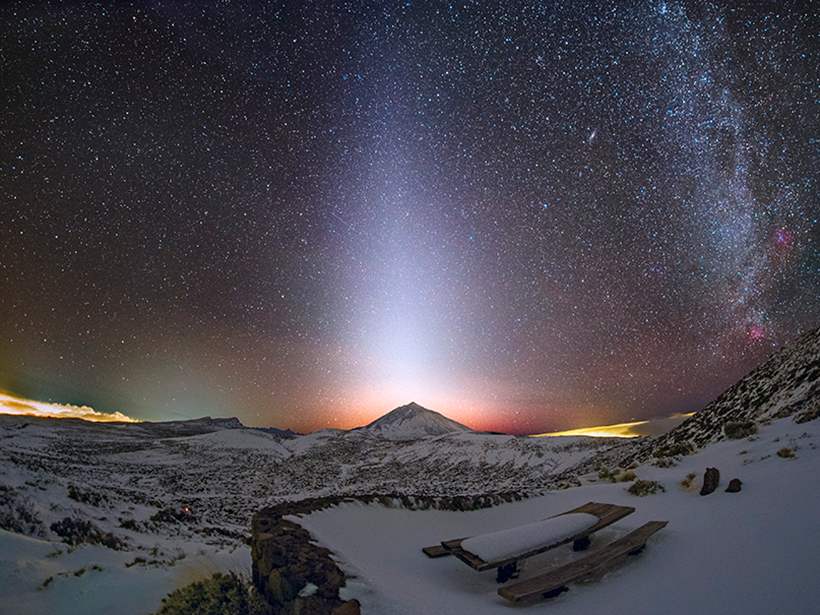Source: Journal of Geophysical Research: Planets
Just before sunrise or after sunset, observers of the night sky might behold a faint column of light extending upward from the horizon. Known as zodiacal light, this celestial glow results from sunlight reflecting off dust particles in the inner solar system. However, the source of the dust is unknown.
Many scientists have long assumed that the particles responsible for zodiacal light are delivered by comets and asteroids. Now Jorgensen et al. suggest that the origins of this interplanetary dust are instead associated with Mars.
The particles in question are known to orbit the Sun in discrete bands near the ecliptic plane—the plane defined by Earth’s orbit. However, their scarcity has made them difficult to observe in space; a sensor with a large collecting area is needed to detect an appreciable number of them. In a serendipitous turn of fate, navigational cameras associated with the magnetometer instrumentation aboard the Juno spacecraft provided an unexpected opportunity to detect these particles and determine their distribution for the first time.
From 2011 to 2016, as Juno traveled through the solar system on its way to Jupiter, its cameras tracked tiny fragments of material knocked free from the spacecraft by collisions with interplanetary dust particles of the size associated with zodiacal light. Juno’s 60 square meters of solar arrays provided a large target for dust impacts, ultimately recording 15,278 such events. The researchers analyzed the amount and distribution of the detected particles in the context of Juno’s journey relative to the ecliptic plane, Mars, Jupiter, and the asteroid belt.
The analysis suggests that the dust likely originates from a source that shares orbital characteristics with Mars, including both the precise tilt of its orbit around the Sun and its eccentricity. Some of the dust is then scattered into an orbit with a higher angle of tilt, which can be explained by gravitational interactions with Jupiter.
A Martian origin for the dust would account for both the Juno observations and previous observations of zodiacal light, but for now, these particles remain mysterious. Researchers have not yet identified a clear mechanism by which they might escape from Mars itself or from either of its two moons, Phobos and Deimos. (Journal of Geophysical Research: Planets, https://doi.org/10.1029/2020JE006509, 2020)
—Sarah Stanley, Science Writer
Citation:
Stanley, S. (2021), The space dust that causes zodiacal light might come from Mars, Eos, 102, https://doi.org/10.1029/2021EO153070. Published on 12 March 2021.
Text © 2021. AGU. CC BY-NC-ND 3.0
Except where otherwise noted, images are subject to copyright. Any reuse without express permission from the copyright owner is prohibited.
Text © 2021. AGU. CC BY-NC-ND 3.0
Except where otherwise noted, images are subject to copyright. Any reuse without express permission from the copyright owner is prohibited.

